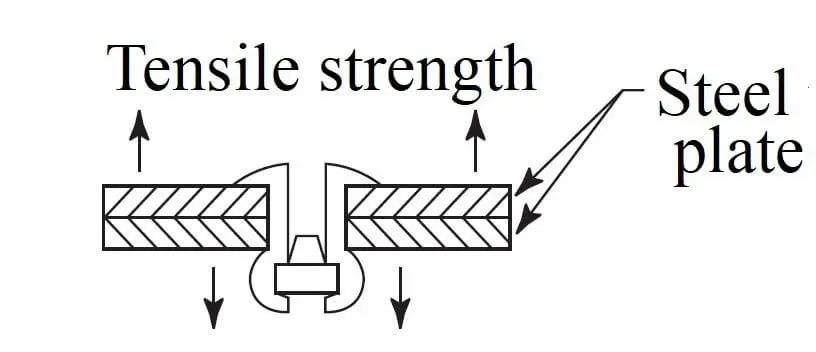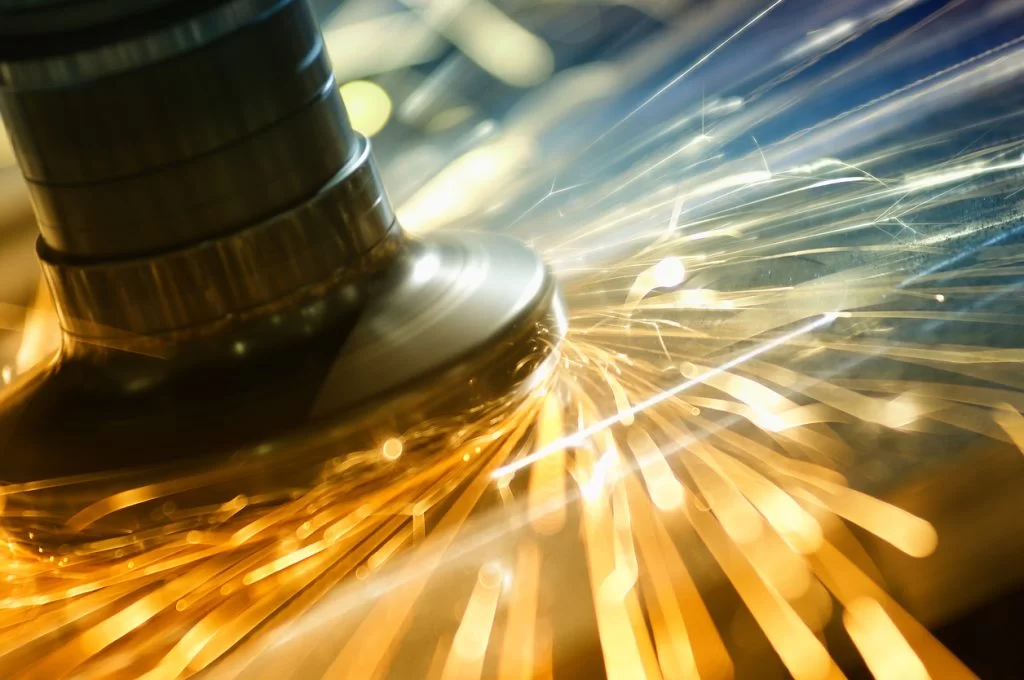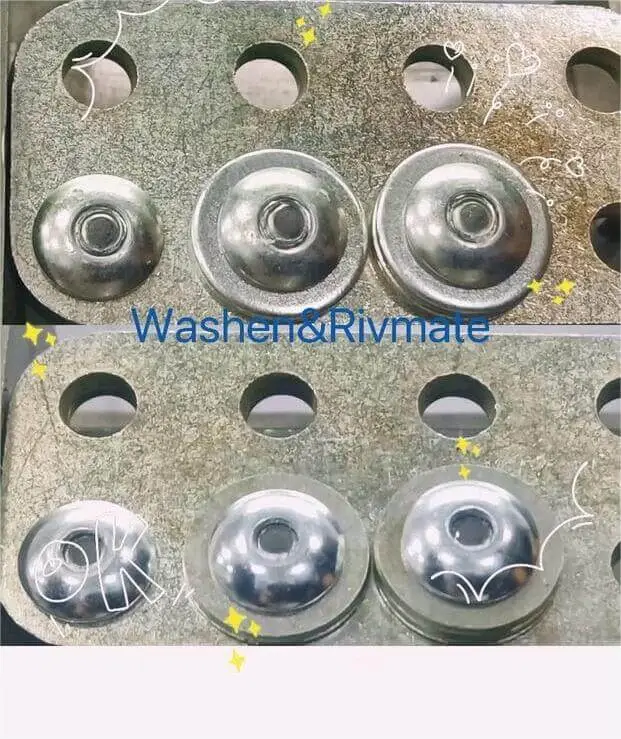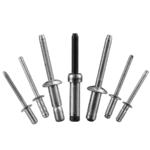Home » 归档于 eric@world-rivet.com » 第6页
What Makes a Rivet Permanent?

Rivmate Fastener
Top Rivet and Rivet Nut Manufacturer in China
Table of Contents
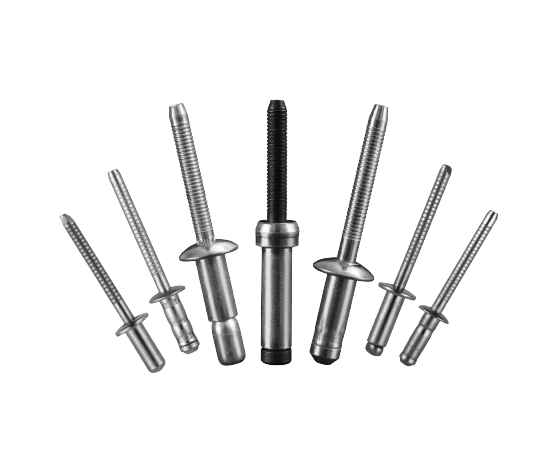
As a common fastener used in industry, rivets have remarkable characteristics. The connection provided by rivets is generally a permanent one. So do you know what makes a rivet permanent?Through this article, you will understand the mystery.
Table of Contents
I’m sure many of you have a question, are rivets permanent?
Typically, a riveted connection is considered a permanent connection. Rivets hold materials tightly together through irreversible deformation during installation and once installation is complete, they usually cannot be easily removed or reused.

The rivet installation process is irreversible. Once a rivet has been installed, there is no way to remove the rivet unless the rivet structure is damaged.
Why is a Riveted Joint a Permanent Joint?
Unlike other assembly fasteners, rivets have a unique principle of operation and connection. This makes it impossible to easily remove them after installation without damaging the connecting material. The following are the key reasons that make riveted connections permanent.
1. Rivet Installation Process
- Deformation Fixation: When rivets are installed by mechanical or hand tools, the tail of the rivet undergoes plastic deformation, expanding and tightly fixing it between the two connecting materials. Since this deformation is irreversible, rivets once installed cannot be removed by ordinary means.
- Strong Tightening Power: During installation, the rivet’s tail expands through the tensile force of the mandrel or tool, thereby tightly compressing the connecting material. This mechanical tightening force is very strong, ensuring a strong connection and making the rivet difficult to loosen.

2. Not Reusable
- Irreversible Deformation: The rivet undergoes irreversible plastic deformation at the end of the rivet during installation, which causes it to become firmly seated in the material. This deformation prevents the rivet from being loosened and reused in the same way as a bolt or screw, so once installed, the rivet becomes permanently fixed.
- Difficulty of Removal: To remove a rivet, it is usually necessary to drill the rivet out using a drill bit or to remove it by destroying the head and tail of the rivet. Rivet connections are therefore designed to remain in place for long periods of time and are not suitable for frequent removal.
3. High Vibration Resistance and Stability

- Prevent loosening: The deformation fixing method of rivets makes them highly resistant to vibration and impact. Unlike screws or bolts, rivets are not easy to loosen under high vibration or dynamic loads, so it can maintain a stable connection for a long time.
- Continuous tightening force: Since rivets generate a continuous tightening force through deformation during installation, this tightening force does not easily disappear even under high vibration or dynamic loads, further reinforcing its characteristics as a permanent connection.
4. Designed for Permanent Use
Rivets are not designed to be adjustable or reusable, but to provide a one-time, permanent connection. That’s why they are fastened in such a way that rivets can’t be reused. They are typically used in structures that don’t require frequent disassembly or adjustment, such as bridges, airplane wings, and automobile bodies.
5. Simple Construction Reduces the Possibility of Loosening
Unlike bolts, screws, etc., which require additional nuts or washers, rivets do not require additional components to remain tight. This feature reduces the risk of failure due to loose components, making them more reliable.
6. Suitable for Long-term Use in the Environment
Rivets are usually made of metal (e.g. steel, aluminum, stainless steel) with excellent corrosion and wear resistance. These also enable them to maintain a long service life in harsh environments. Further reinforcing the fact that rivets are permanent connections. This durability makes them ideal for long term fixing applications such as construction, aerospace and automotive.
Moreover, rivets are not susceptible to fatigue or failure under constant load. This property ensures the lasting stability of the connection. It also further contributes to the permanence of the rivet connection.

Contact Our Engineers Today
We provide you with high quality rivets, including customized services.
Is Pop Riveting Permanent?
Of course, pop rivet is a type of rivet. pop riveting is usually considered a permanent connection. As with all rivet, there is no way to easily remove or reuse a pop rivet once it has been installed. The only way to remove the rivets is by destroying the structure of the pop rivets.
Why Do My Rivets Keep Popping Off?
If the rivets keep falling out, there could be multiple reasons for a weak connection. Here are some of the common reasons:
- Improper rivet size
- Rivet quality is not good
- Drill hole size does not match
- Improper rivet installation tools
- Improper choice of rivet material
- Uneven loading of the joint or exceeding the designed load capacity of the rivet
- Insufficient pre-drilling accuracy
- Insufficient expansion of the rivet
What Makes Rivets More Suitable than Bolts or Screws as a Long-term Fixed Connection?
The main reasons why rivets are more suitable than bolts or screws for long-term fixed connections include their irreversible installation, resistance to vibration and shear, simplicity of construction, ability to adapt to thin materials, and high durability. They have clear advantages in connection situations where high strength and long-term stability are required, such as in construction, aerospace, and automotive manufacturing.
- Once installed, rivets hold material tightly in place by plastic deformation, creating an irreversible and permanent connection. Unlike bolts and screws, rivets cannot be easily removed, making them ideal for structures or equipment that do not require frequent disassembly.
- Because rivets are held in place by the expanding deformation of the tail, they form a tight mechanical locking connection suitable for environments with high vibration or dynamic loads. Rivets are not prone to loosening or falling off under such conditions.
- Rivets are quick to install and suitable for automation. In contrast, bolts and screws typically require maneuvering from both sides and take longer to install.
- Rivets are fatigue resistant

Contact Our Engineers Today
We provide you with high quality rivets, including customized services.
Why Were Rivets Originally Designed to be Single-use and Provide a Permanent Connection?
Rivets were originally designed for single use and to provide a permanent connection. Their purpose is to provide a secure, stable fixing in high-strength, extreme environments, reducing maintenance requirements and increasing efficiency in mass production. Through this design, rivets play a vital role in a variety of critical projects, meeting the requirements of safety, durability, simplicity and economy.

Rivets were originally designed to provide a stable connection over time. That is why rivets use an irreversible method of fastening materials through plastic deformation.
And because rivets don’t have as many auxiliary fittings, they don’t need to be checked or retightened on a regular basis.
Conslusion
In practice, rivets are treated as permanent connections. By reading the above, I believe you already know why riveting is a permanent connection.
If you want to create a permanent connection for your project, please contact our engineers. You will get a satisfactory solution.
Get Permanent Connection Solutions from Rivmate
Your project has decided to use rivet for permanent connections? Then get in touch with us!
Rivmate is the top pop rivet manufacturer in China. you will get all you want here.































